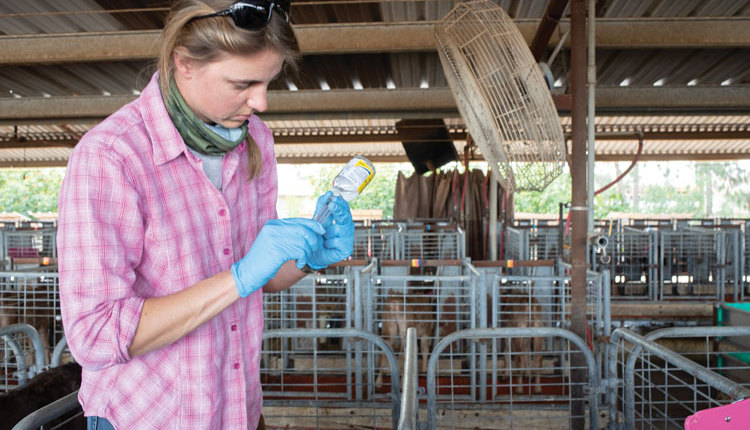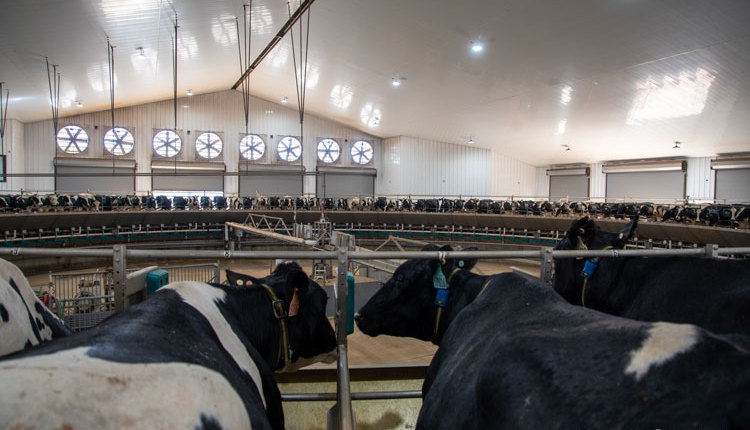
Consumers expect safe and wholesome milk that is free from medicine residues. On the flip side, cows get sick and need treatment, and it is almost impossible to avoid using medicines in any dairy herd. Given this situation, it is essential that key steps are taken to ensure that milk is put back into the bulk tank only after the end of the milk withdrawal period.
The big picture
Residues can come from antibiotics and other veterinary medicines. The risk of residue failure will be minimized if the following steps are taken.
1.Training and residue avoidance. It is essential that all people involved in treatment and milking are trained so that they understand the importance of their role in residue avoidance. Training should include relief milkers and be ongoing, and it should also be repeated whenever any new staff member joins the farm. The training and residue avoidance standard operating procedure (SOP) should include an understanding of the importance of producing milk that is free from residues, the implications of residue failures, and the key steps needed to minimize contamination.
2. Have a written treatment SOP. It is important to agree and follow a written treatment protocol with the farm veterinarian. This means that everyone who carries out any treatment knows what regime to follow. This is especially important in large herds where multiple people might be administering treatments.
3.Record all treatments. It is a legal obligation to record all treatments given to food-producing animals. Veterinarians who treat animals on-farm must ensure that they have either entered treatment details in the medicine book or left a note of all required information so that the farmer can enter it.
A whiteboard at the front of the parlor is a good way to record treatments so that all milkers can see which cows have been treated and on what date. This is in addition to recording information into the medicine book or farm computer.
4.Identify all treated cows. There are farms that don’t have any recognizable form of cow identification other than an official ear tag number. It is essential that all cows have a clearly identifiable management number.
It is essential that all treated cows are clearly identified so that their milk can be discarded. Most dairy farmers identify treated cows using leg or tail tape, spraying the udder with a colored paint, and entering treatment details in the milking parlor computer. Ideally, use two different forms of identification for treated cows to keep a close eye on them.
5. Mark all cows before treatment is administered. The best practice is to identify every cow as treated before any treatment is administered, even if there is a separate treatment group as cows can get mixed up.
6. Milk all treated cows last or separately. Ideally, keep any cows whose milk must be discarded in a hospital group, which is milked last to avoid accidental transfer to the bulk supply.
If this is not possible, treated cows should be milked through a dump bucket or dump line. Many new parlors have dedicated dump lines; however, a milker might fail to realize that a treated cow needs to be milked into the dump line.
If milking cows through a receiver jar, it is essential that the jar is thoroughly rinsed out after milking as medicine residues can concentrate in milkfat. There are occasions where milk from the receiver jar may accidentally be transferred to the bulk tank if the milker forgets a cow was treated. There can also be problems with leaky valves at the bottom of the jar where some milk with residues leaks and contaminates the bulk supply.
7. Observe the correct withdrawal periods. Clearly understand and follow the correct withdrawal period. This will be shown on the medicine label and should be shown on the treatment SOP. This information must be updated if withdrawal periods change.
8. Set withdrawal periods for “off-label” treatment. Follow the guidance from your veterinarian when cows are treated off-label, which includes any deviation from the medicine data sheet such as changing frequency, route, dose, or length of treatment. It is important that everyone understands what an off-label treatment is and that they understand the minimum milk withdrawal period for “off-label” use.
9. Confirm recently calved cows are residue free. Check medicine records every time a cow calves to make sure that the milk withdrawal period has expired before returning the cow’s milk into the bulk tank. Dry cow therapy contains high levels of antibiotic in a slow-release base, and so it poses a significant risk of residue failures. The milk withdrawal period for some dry cow products can be quite long, including the minimum days dry and a period for milk discard after calving.
10. Keep dry cows separate. Some smaller farms keep milking and dry cows as one group. The best practice is to separate milking and dry cows and only allow lactating cows into the milking parlor.
11. Test milk from purchased cows. Many farmers buy cows on trust and presume their milk is free from medicine residues. It is possible that cows may have been treated prior to purchase or may have calved early and still contain residues from dry cow therapy. Assume that milk from all purchased cows has residues and withhold it from the bulk tank until residue screening tests confirm the milk has passed.
12. Discard milk from all four quarters. The udder has a massive blood supply and 500 liters (130 gallons) of blood circulating around the udder for every liter of milk produced. I have heard of some farmers who still only discard milk from an individual quarter that is treated with an intramammary medication. This can cause residue failures.
13. Separate medicine storage. Store medicines for lactating and nonlactating cows separately. Many intramammary and injectable products have similar packaging and bottles, which can be confusing.
For example, if a dry cow intramammary treatment is administered to a milking cow in error and the milk is returned to the bulk tank after the withdrawal period for the lactating tube, then a bulk tank residue failure is likely to occur. Many injectable antibiotics for nonlactating animals can cause residues for a long period of time. Some medicines are simply illegal to use in milking cows. Separating these products in the medicine cabinet helps reduce the risk of accidents.
14. Ensure that medicines are labeled with the correct withdrawal period. Medicine labels must show the milk withdrawal period. Farmers should not have to worry about labeling because this requirement lies firmly with the dispensing veterinarian.
The prescribing veterinarian must give advice on medicine administration. This will include the dose rate, frequency of treatment, and the route of administration. Several routes can be used including intramuscular, intramammary, oral, topical, intravenous, intrauterine, or subcutaneous. Milk withdrawal periods change, and it is important that the vet practice and/or pharmacist changes the label indications to make sure it is up-to-date.
15. Use antibiotic screening tests as required. If a medicine has been administered following data sheet recommendations, there is no need to test milk from individual cows at the end of the milk withdrawal period. If a cow has been treated off label or if there is any doubt, test the milk before releasing it into the bulk tank.
It takes everyone
Many individuals have a responsibility to ensure that residues do not enter the food chain. The prescribing veterinarian has a responsibility to be sure the farmer understands treatment guidelines, how medicines should be administered, and to advise on the correct milk withdrawal periods.
The farmer has contractual and legal obligations to ensure that residues do not enter the bulk tank. Residue failures are due to human error or lack of communication. Product-related problems are rare.









